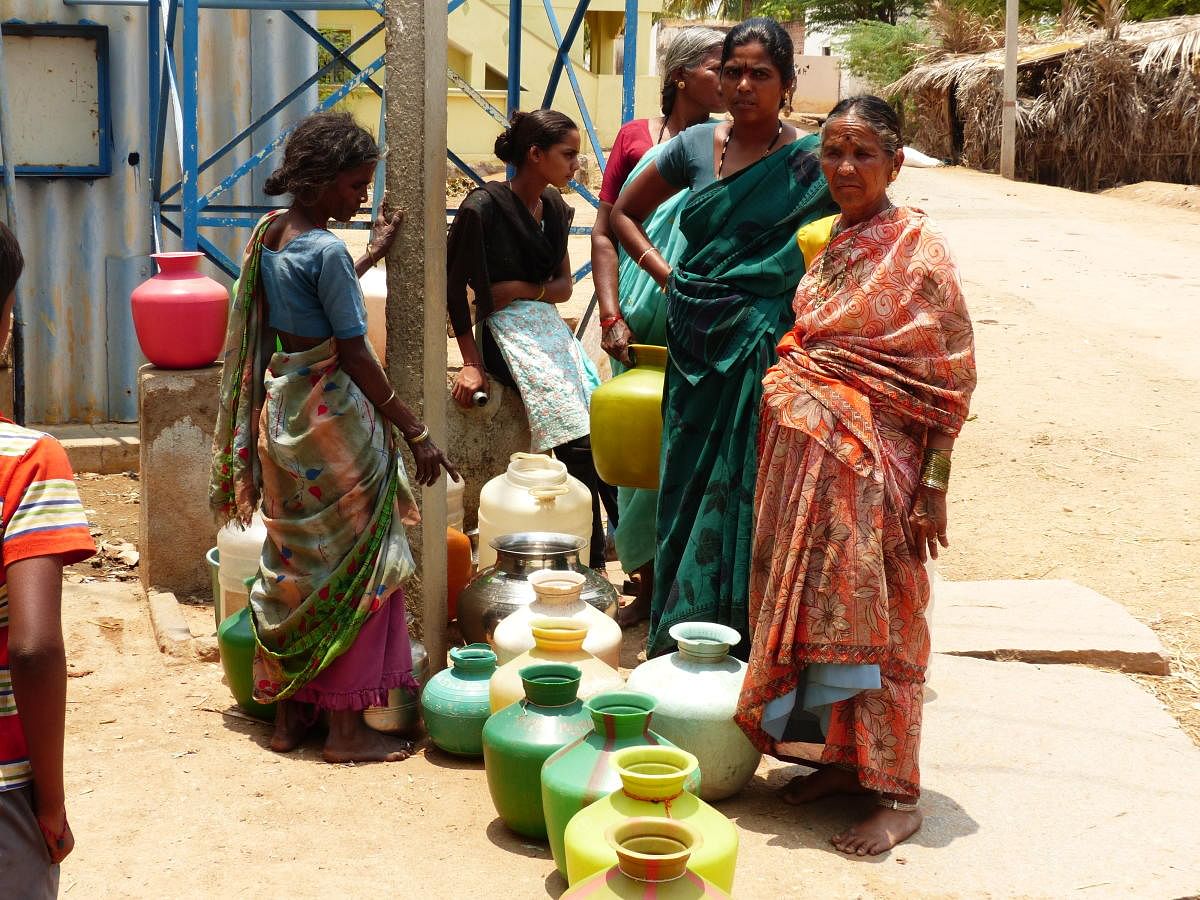
As drought in Tumakuru’s Pavagada taluk enters its 14th successive year, dental and skeletal fluorosis is afflicting its people in large numbers. According to district health authorities, Tumakuru district has 695 and 315 confirmed cases of skeletal and dental fluorosis, respectively, with Pavagada alone accounting for 315 and 136 cases of these ailments. Skeletal and dental fluorosis is caused when water containing excess fluoride is consumed. Severe shortage of water in Tumakuru district is the cause. People here are heavily dependent on borewell water. Ten years ago, villagers in Pavagada needed to dig 500 ft to access water. But drought has forced them to dig deeper for water. Water at 1,000-1,200 ft contains large amounts of fluoride. While children consuming fluoride-rich water are more prone to dental fluorosis, adults are more vulnerable to developing skeletal fluorosis.
The Union Ministry of Health and Family Welfare has identified 132 districts in 19 states where water has very high fluoride content. People here are vulnerable to being afflicted with fluorosis. Fluorosis is not fatal. Neither is it a disease. Still, dental fluorosis, which is more of a cosmetic condition, makes children embarrassed, vulnerable to teasing and causes psychological distress. As for skeletal fluorosis, it causes painful damage to bones and joints, and is severely disfiguring and debilitating. Fluorosis is hard to cure and is rarely reversible. Hence, the approach to it should focus on prevention and pain relief. Water in Pavagada is reported to contain five times the permissible amount of fluoride. The Karnataka government has set up reverse osmosis plants across the state, but corruption and non-maintenance of these plants have left them dysfunctional, such as in Pavagada. The Siddaramaiah government set aside Rs 2,500 crore for a drinking water project in the region, but it is yet to take off. As a result, people continue to drink either fluoride-rich water from borewells or buy water whose quality is questionable.
The government needs to act more robustly to free Pavagada of fluorosis. Promises and plans need to be implemented without further delay. Importantly, a health centre focusing on treatment of dental and skeletal fluorosis must be set up at Pavagada. At present, those suffering from fluorosis have to travel to Bengaluru or Tumakuru town for treatment. Skeletal fluorosis being a debilitating chronic condition, those afflicted cannot travel long distances easily. Additionally, such travel and treatment may be beyond the means of many villagers. It is time public health authorities in Karnataka took the fluorosis problem seriously and put in place a comprehensive strategy to address it.